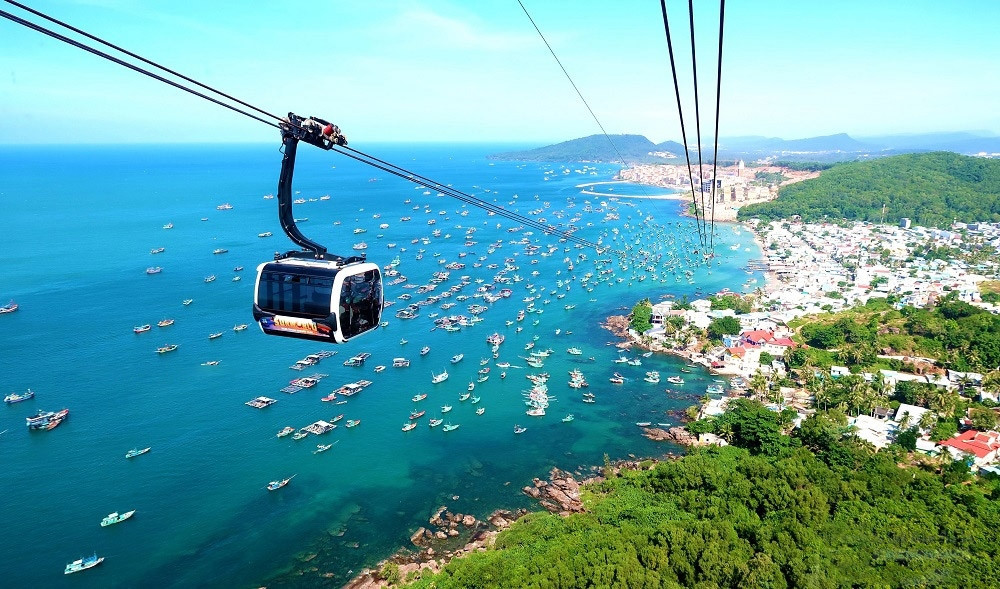

The article, titled “If You Can Take the Cable Car to the Colosseum, You’re in Vietnam”, introduced the cable-cars of Sun Group, which feature giant Buddhas, ersatz European enclaves, and selfie spots galore.
The American travel writer wrote of his interesting experiences on cable-cars on Phu Quoc Island in southern Vietnam.
He described that the station looks like a full-scale, prefab section of the Roman Colosseum, with the town being an elaborate facsimile of a seaside Italian city complete with a hulking bell tower, mock baroque fountains in piazzas, and pseudo Roman ruins. “Fanning out all around are several hundred pastel — and almost entirely empty — terraced buildings lining streets named Venice, Amalfi, Positano and Sorrento,” he added.
“It looks like Disneyland,” said an amply tattooed Tomek Tabaka, 44, part of a group of four Polish friends traveling together, “or maybe The Truman Show.”
Scott shared that the nation is home to four of the longest cable cars in the world, all of which were built in the last decade, underscoring the stunning transformation of the Vietnamese economy and its tourism sector.
In his article, the travel writer also quoted Steven Dale, founder of the Gondola Project, an industry tracking website, as sayings that most of the growth in the global cable car industry is in the urban transit and tourism markets, whilst most of the action in the tourism sector is in Asia. He revealed that one of the most prolific cable car developers is Vietnam.
In line with this, 26 cable car lines have been built in a dozen locations across the country over the past two decades, according to data compiled by cable car manufacturers.
“Of course, hundreds of ski lifts have been built in Europe over the same period. But Vietnam is remarkable in its rapid escalation of the installations for tourism,” the article concluded.
Source: VOV